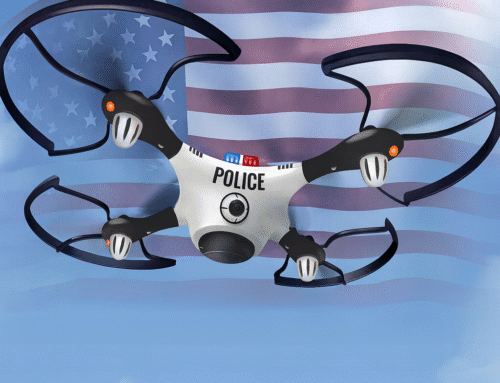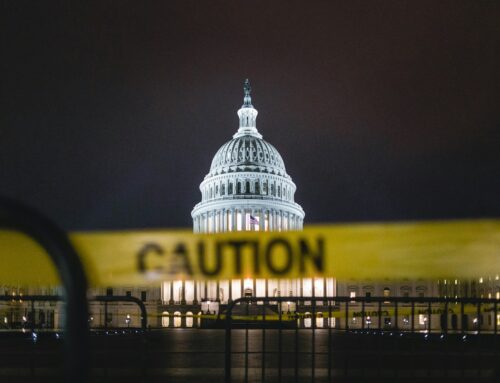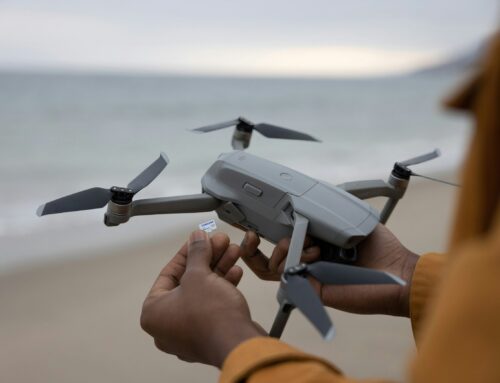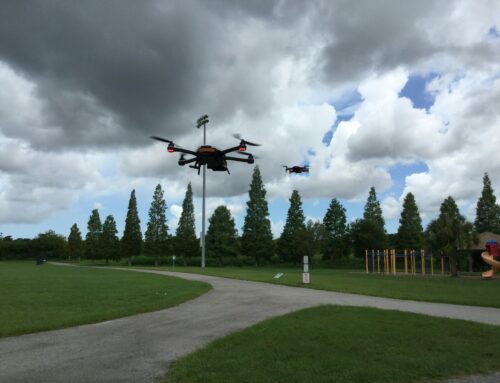The U.S. Federal Communications Commission (FCC) just took a huge step to clean up online marketplaces. It asked major retailers to pull down millions of listings for electronics that didn’t meet U.S. safety and security standards.
The move affects popular products like home security cameras and smartwatches made by Chinese tech giants such as Huawei, ZTE, Hikvision, and Dahua. According to FCC Chair Brendan Carr, many of these devices either came from companies on the agency’s restricted “Covered List” or lacked the proper FCC certification to be sold in the U.S.
Officials say the goal is to protecting Americans from potential risks like data spying or network disruptions. This massive takedown marks one of the toughest U.S. crackdowns yet on high-risk foreign electronics.
The Communist Party of China is engaged in a multi-prong effort to insert insecure devices into Americans’ homes & businesses.
— Brendan Carr (@BrendanCarrFCC) October 10, 2025
Today, I am announcing the initial success of “Operation Clean Carts.”
This new FCC effort has resulted in millions of listings for prohibited Covered… pic.twitter.com/PedMNuGr18
What Happened: A Massive Takedown of Unauthorized Chinese Electronics
The enforcement surge came after the FCC issued a national security notice reminding companies about electronics barred from U.S. commerce – particularly communications and video-surveillance gear from certain Chinese manufacturers. In response, major e-commerce platforms (including top online retailers and marketplaces) swept their sites of millions of listings for devices that fell afoul of FCC rules. Many of the removed products were either on the FCC’s blacklist of prohibited communications equipment or had never been authorized by the agency as required by law.
Examples of delisted items include Wi-Fi cameras, smartphones, and other connected gadgets sold by companies like Huawei and Hikvision – firms previously identified as national security threats Brendan Carr noted that retailers have now put new vetting processes in place to prevent banned or uncertified devices from reappearing on their platforms. Carr emphasized that this is not a one-off action, saying that they would keep up their efforts. The FCC plans to continue monitoring online marketplaces to ensure compliance, as part of its mandate to protect U.S. networks and consumers.
This massive cleanup shows just how many illegal gadgets had slipped into online stores — and how serious the U.S. has become about catching them. In recent years multiple agencies – from telecom regulators to the Department of Defense – have clamped down on Chinese tech firms over espionage and cybersecurity fears. The de-listings come amid elevated Washington–Beijing tensions in tech, and signal to sellers that unauthorized foreign gadgets will be actively ferreted out.
Why the FCC Is Cracking Down: Security Laws and the “Covered List”
U.S. officials say the crackdown is driven by national security concerns. Many of the affected devices, such as IP cameras and networked electronics, can transmit data back to China or infiltrate telecom networks, raising alarms that they could be used to “surveil Americans, disrupt communications networks, or otherwise threaten U.S. national security”. The FCC’s actions align with a 2019–2025 campaign of federal measures targeting Chinese tech on security grounds. This includes bans on Huawei and ZTE telecom equipment in U.S. infrastructure, export controls on advanced chips, and restrictions on government use of Chinese-made drones and other gear.
A key pillar of the FCC’s effort is the Secure Equipment Act of 2021, a bipartisan law that reformed the FCC’s device approval process in the name of security. Under this law, the FCC was required to update its equipment authorization rules to block any new radio-frequency devices from companies deemed security threats. The FCC maintains an official Covered List of such companies (named under the Secure and Trusted Communications Networks Act) – and being on this list effectively bars a firm’s electronics from being legally imported, marketed, or sold in the United States.
As of 2025, the Covered List includes several major Chinese telecom and surveillance manufacturers – among them Huawei, ZTE, Hytera, Hikvision, Dahua – as well as some Chinese state-run carriers and even a Russian cybersecurity firm. U.S. carriers are prohibited from using federal funds to buy from these suppliers, and the FCC cannot grant certification to any new equipment from these entities. Essentially, once a company’s hardware is “covered,” it’s locked out of the U.S. market by law.
This latest enforcement wave shows the FCC’s increasingly aggressive stance in policing the gray market of banned devices. It’s not just denying approvals on paper – the agency is now actively working with retailers to hunt down and purge contraband gadgets that slip through.
The FCC also signaled more to come: on October 28, 2025, commissioners will vote on new rules to close loopholes that remain. One proposal would bar even devices that contain components from Covered List entities, preventing blacklisted tech from being embedded as parts inside otherwise “allowed” products. Another proposal would empower the FCC to invalidate prior certifications and prohibit the sale of previously authorized equipment on a case-by-case basis if new security risks emerge.
In other words, the FCC wants the ability to retroactively pull problematic devices off the market if evidence shows they pose a threat. These steps, if adopted, would give the agency potent new tools to enforce security – marking a shift from the historically purely technical scope of device certification to a hybrid technical–security mandate.
How FCC Device Authorization Works – and What “Banned” Means
Any wireless or radio-frequency device sold in the U.S. – whether it’s a smartphone, Wi-Fi router, or drone – must go through the FCC’s equipment authorization process before it hits the market. This process (often called FCC certification) entails lab testing and documentation to ensure the product meets technical standards: it must not emit radio interference beyond allowed limits, must operate in the proper frequency bands, and must comply with RF exposure safety guidelines. Only after a device is certified (or otherwise authorized under FCC rules) is it legal to import, market, or sell in the United States. Certified devices receive an FCC ID – a unique identification code that manufacturers must label on the product or its packaging. Consumers and retailers can look up this FCC ID in the FCC’s online Equipment Authorization database to verify that a product is approved. (If a gadget doesn’t have an FCC ID or equivalent approval, that’s a red flag that it might be unauthorized.)
Being “banned” in the FCC context means that a device cannot obtain FCC authorization – making it effectively illegal to sell or distribute in the country. The FCC’s Covered List is the mechanism defining such bans at the company level: when an entity is on the list, no new equipment made by that company can be granted certification. The Secure Equipment Act directed the FCC to deny all applications from listed entities, slamming shut what had been a loophole allowing some sales despite other sanctions.
In practical terms, if a manufacturer is banned, any new model they try to bring to market will be rejected by the FCC’s lab authorization system. Even devices that might otherwise meet technical requirements are barred simply due to the producer’s security designation. Retailers must likewise pull any products that aren’t FCC-certified or that come from banned companies, as we’ve now seen with the recent mass delistings. Consumers could face safety and legal risks using non-certified devices, so the FCC’s crackdown also serves to protect the public from sub-standard or potentially compromised electronics.
It’s worth noting that devices already certified before a ban are generally grandfathered – the FCC’s 2022 order implementing the Secure Equipment Act did not revoke existing device approvals for Huawei, ZTE, and others at that time. Those products could still be used or sold as second-hand units. However, the agency left the door open to revisit previously authorized equipment if necessary, and upcoming policies may tighten this further. For now, once a ban is in place, it is forward-looking: the company essentially cannot introduce anything new into the U.S. market. This is why being added to the Covered List is a financial death sentence for a tech firm’s U.S. ambitions – and why companies fight hard to avoid that designation.
Drones in the Crosshairs: Implications for DJI and a Looming 2025 Deadline
So far, the FCC’s public crackdown has mainly focused on telecom and video surveillance hardware. Notably absent from the recent removal list were drones – popular consumer products that also contain cameras and radios. However, there are jitters that drone makers like DJI could be next in line, as the same legal tools and concerns apply. DJI, based in Shenzhen, is the world’s largest consumer drone manufacturer – and has been under U.S. scrutiny for years over its Chinese ties and data practices. The Pentagon has already placed DJI on its list of “Chinese Military Companies,” effectively banning DJI drones from U.S. military procurements. Several federal agencies, including the Interior Department, have grounded or restricted use of DJI drones due to cybersecurity worries. Now a combination of recent legislation and FCC action may determine DJI’s future in the broader U.S. market.
The crucial factor is a provision in the National Defense Authorization Act (NDAA) for 2025. Under Section 1709 of that law, U.S. security agencies were given one year (until December 23, 2025) to formally assess whether DJI (and its smaller competitor Autel Robotics) pose an “unacceptable risk” to national security. If no agency completes such a review by the deadline, the law mandates that the FCC must automatically add DJI (and Autel) to its Covered List. In plain terms, this would amount to an automatic ban on DJI’s drones by the end of 2025 unless a government security audit clears the company. As of today, no agency has publicly confirmed an ongoing review of DJI, and DJI has even called on the U.S. government to conduct one, insisting it has “nothing to hide”. The clock is ticking toward the December deadline with uncertainty about whether an audit will occur in time.
Related Reading: Chinese Drones Push Back Against U.S. Restrictions
If DJI is added to the Covered List by default on 12/23/2025, the impact on the drone industry will be dramatic. The immediate consequence is that no new DJI products could receive FCC authorization or be legally sold in the U.S. thereafter. Retailers would be unable to stock DJI drones, and existing inventory would dwindle to zero.
Without FCC certification, DJI’s latest models could not be imported or offered for sale, cutting off the supply of the most popular drones to American consumers and businesses. Repair shops would struggle to get replacement components, since even spare parts with radio modules (e.g. remote controllers) require authorization. Future software or firmware updates might also be affected – for example, if a drone update involves changes to radio operation, the FCC could bar it once the company is blacklisted. In effect, DJI would be locked out, and competitors would rush to fill the void.
Already, the market is reacting in anticipation of a potential ban. In recent months, many DJI drone models have become scarce or “out of stock” at U.S. retailers. Industry reports indicate that DJI’s American dealers are facing severe inventory shortages, partly because U.S. Customs has held up shipments (citing separate trade laws and import scrutiny) and partly because the FCC halted new equipment approvals for DJI pending the NDAA review outcome.
For instance, DJI’s flagship Mavic 4 Pro, launched globally in 2025, was never released in the U.S. due to regulatory uncertainty – it can only be found through unofficial grey-market imports and carries no U.S. warranty. Consumers who visit DJI’s official U.S. online store will find almost all drone units listed as “sold out” or backordered. This de facto freeze is happening even though no ban is in effect yet.
Another challenge is the emergence of workarounds that allow restricted foreign technology to enter the U.S. market despite existing bans. One common strategy involves using shell companies and alternative branding to conceal a product’s true origin.
Investigations have found that some manufacturers submit regulatory applications under new or unfamiliar company names, then release nearly identical products through lesser-known brands or third-party retailers. These rebranded items often match the specifications of previously restricted devices, just without the original logo or labeling.
Industry analysts say multiple entities suspected to be linked to foreign manufacturers have filed certification requests in recent months. This approach appears designed to obscure direct ties to blacklisted companies and maintain access to the U.S. marketplace under different identities.
New @FCC filings reveal Jovistar Inc., a newly identified, suspected @DJIGlobal shell company, submitted documents for an unmanned aircraft with specifications closely matching the DJI Mini 5 Pro #drone, complete with LiDAR capability that could... https://t.co/389TbDccIF
— DRONEXL.co (@DroneXL1) September 27, 2025
Regulators are aware of these maneuvers and are moving to counter them. The FCC’s October 28 vote on closing the component loophole is partly aimed at sweeping in such rebranded devices, ensuring that simply slapping a different name on a product won’t circumvent the ban. If DJI does end up on the Covered List, officials will likely scrutinize any affiliate or “white-label” brands to keep essentially DJI-made units out of U.S. airspace.
For American drone enthusiasts and professional operators, the prospect of losing DJI is significant. DJI accounts for an estimated 70–80% of the consumer drone market in the U.S., thanks to its advanced technology and relative affordability. A ban would not only disrupt hobbyists, but also industries like aerial photography, agriculture, and public safety where DJI drones are commonplace. Some smaller Chinese drone makers (e.g. Autel Robotics, which is also named in the NDAA section) could be similarly affected. It may open opportunities for non-Chinese drone manufacturers (including domestic U.S. startups) to compete, but many of those alternatives are still maturing. In any case, the December 2025 deadline is a key moment that could reshape the drone landscape in the United States.
Advice for U.S. Drone Users and Buyers in the Coming Months
With regulatory clouds on the horizon, American drone users and shoppers should stay informed and take precautions as 2025 draws to a close. Here are some key points and tips to consider:
- Watch the FCC and NDAA Developments: Mark your calendar for late October and late December 2025. The FCC’s October 28 vote on tighter device rules will indicate how far the agency is willing to go in enforcing bans. More critically, the NDAA review deadline on December 23, 2025 will decide DJI’s fate if no earlier resolution is announced. Keep an eye on official FCC updates and the Covered List published on the FCC’s website (which is publicly accessible).
- If You Own a DJI Drone: Don’t panic – any ban would not confiscate or shut down drones you already have. The FCC cannot “brick” existing equipment, so your drone will continue to fly as normal. However, you should prepare for reduced support if a ban kicks in. Update your firmware and flight apps now to the latest versions, as future updates may become unavailable or limited. It’s wise to stock up on critical spare parts and accessories (extra batteries, propellers, etc.) while they are still easy to obtain. DJI has promised to support products already in customers’ hands, but if the company is barred from the market, things like warranty service or parts supply could dry up over time. Make sure to back up any important data (flight logs, images, maps) that you normally sync with DJI’s services, just in case cloud features or account access are curtailed. In summary, enjoy your drone but be self-sufficient: have the necessary updates and parts to keep it running without reliance on DJI in the future.
- If You’re Considering Buying a Drone Soon: Be aware that it’s a tricky time to buy a DJI drone. As mentioned, new DJI units are already scarce in U.S. stores. If the ban trigger date passes with no resolution, you won’t be able to buy a new DJI drone legally afterward. For the moment, your options are limited to whatever stock is left or the second-hand market. If you do find a new DJI model on sale, it might be one of the last batches available – and possibly being sold at a premium due to high demand. Purchasing a DJI drone now carries the risk that you might not get much post-purchase support or software updates if the ban goes through.
- Consider Alternatives and Future Compatibility: You might research alternative drone brands that are not under security scrutiny. There are non-Chinese manufacturers (and smaller U.S.-based companies) offering camera drones, which, while sometimes pricier or less feature-rich than DJI, would not face an FCC ban. On the other hand, if you absolutely need DJI’s technology, you might decide to acquire a unit before year’s end (if you can find one) and accept that it could become a legacy product. Just go in with eyes open about the uncertainty.
- Caution for Second-Hand Buyers: The used drone market is an option, but exercise caution. DJI recently implemented stricter account binding rules for its aircraft – meaning that to transfer a drone to a new owner, the original owner’s DJI account must properly unbind the device first. If you buy a used DJI drone, ensure the seller cooperates in transferring the drone to your DJI account; otherwise, you could end up with a drone that you cannot activate or fully use. Stick to reputable resellers or platforms that offer protection, and whenever possible, verify the drone’s status (for example, seeing it fly, confirming it’s not still tied to someone else’s account). Also verify that the model has a valid FCC ID and was originally authorized – avoid any units that look modified or don’t have proper labeling.
- Verify FCC Authorization on Any New Device: Whether it’s a drone or any other wireless gadget, make it a habit to check for FCC compliance. Every legal device should have an FCC ID or Declaration of Conformity marking. You can input this FCC ID into the FCC’s online database search tool to confirm the product is certified. This is especially important in the coming months if lesser-known brands or importers try to sell drones that might actually be repackaged DJI products. For example, if you see an unfamiliar brand advertising a drone with specs mirroring a DJI model, do a bit of research. It could be a rebranded unit attempting to dodge restrictions. Buying an unapproved model could leave you with an illegal device that might not receive support – or worse, it could be subject to a future recall or enforcement action. In short, buy only from trusted manufacturers and dealers, and double-check that any wireless tech you buy is FCC certified and not on the banned list.
If the FCC ban on DJI (or any major brand you rely on) does materialize, understand what that means long-term. You may need to plan for using your existing equipment without official support or eventually transitioning to other platforms. Keep an eye on news from DJI as well – the company might release software tools or guidance for customers in banned regions (as it has done in some other countries facing restrictions). Also watch for any last-minute government decisions: it’s possible an agency could step in with a security review or mitigation agreement that averts the ban. Such an outcome could restore “business as usual,” but given the current bipartisan hard line on Chinese tech, most stakeholders are preparing for a ban as the default scenario.
Related Reading: Tariffs, Trade Wars, and Drone Users Caught In The Middle
FAQs for Shoppers and Drone Users
What is the FCC “Covered List”?
The Covered List is the FCC’s official list of companies and equipment deemed an unacceptable national-security risk. If a company is on that list, new devices from that company can’t be authorized for U.S. sale.
What does “FCC authorization” mean for gadgets?
It means a radio-equipped product passed required testing and was approved to be marketed and sold in the U.S. Without authorization, it’s illegal to sell or import that device.
How do I tell if a product is authorized?
You can check for an FCC ID on the device/box and look it up in the FCC’s equipment database to confirm it’s legit. If there’s no ID for a radio device, that’s a red flag.
Are more rule changes coming?
Yes. The FCC has teed up an October 28, 2025 vote on tougher rules, including the ability to block previously authorized devices if new security risks emerge and to close loopholes where covered components are tucked inside other products.
Did the crackdown on unauthorized Chinese electronics include drones?
Not directly. The recent takedowns focused on telecom and surveillance gear, but the same legal framework could reach drones if their makers land on the Covered List.
Could DJI be banned in the U.S.?
Yes, it could—depending on what happens by December 23, 2025. Under the 2025 NDAA, if a U.S. security agency doesn’t complete a required review by that date, the FCC must add DJI (and Autel) to the Covered List, blocking new product approvals.
Would my existing DJI drone stop working after a ban in the U.S.?
No. Existing, already-authorized drones don’t get “bricked.” You could still fly what you own, though future updates, parts, or official support could become more limited.
I’ve seen unfamiliar brands selling “DJI-like” drones. Are those safe to buy?
Be cautious. Some sellers may rebrand near-identical hardware to dodge scrutiny. Always check for a valid FCC ID and research the manufacturer before buying.
Does the Secure Equipment Act affect products that were approved in the past?
Generally, earlier approvals weren’t automatically revoked in the 2022 order, but the FCC is now considering authority to revoke certain existing approvals if security risks warrant it.
What kinds of products were removed in this sweep?
Products included smartwatches, home security cameras, and other connected electronics from companies already on the Covered List or with no authorization.






